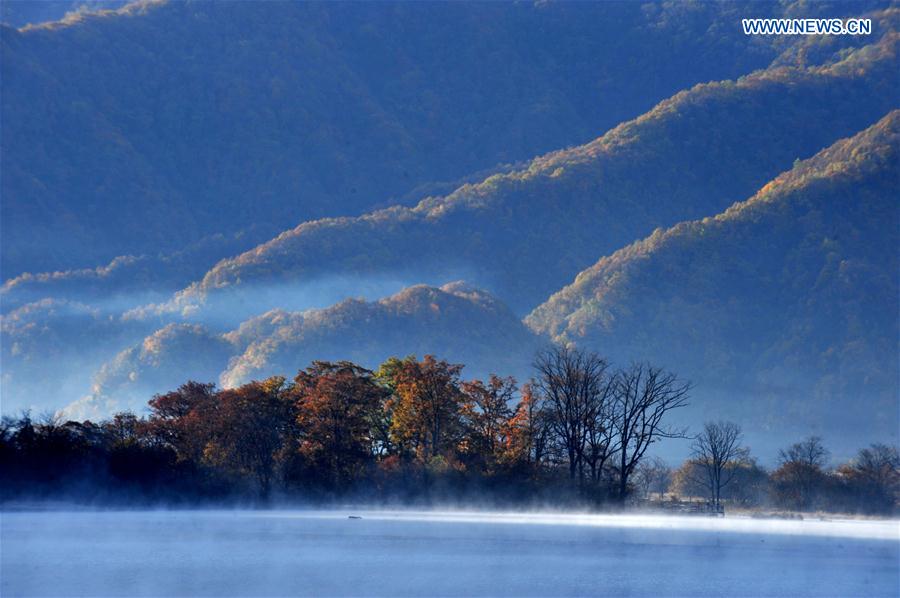
SHENNONGJIA, July 17, 2016 (Xinhua) -- Photo taken on Oct. 17, 2012 shows the scenery of the wetland of Dajiu Lake in the Shennongjia Forestry District, central China's Hubei Province. The 40th session of the World Heritage Committee on Sunday decided to put China's Hubei Shennongjia on the pretigious World Heritage List as a natural site, bringing to 50 the number of listed Chinese sites. Located in the northwestern mountains of Hubei Province, the Shennongjia Forestry District was established in 1970. As the only well-preserved sub-tropical forest ecosystem in the world's mid-latitudes, Shennongjia boasts rich natural forest resources with more than 5,000 species of animals and plants. (Xinhua/Du Huaju)
WUHAN, July 18 (Xinhua) -- Following the inclusion of central China's Shennongjia on UNESCO's World Heritage list on Sunday, a series of protection measures and plans will debut, local authorities said Monday.
At its 40th session in Istanbul, the World Heritage Committee recognized Shennongjia in Hubei Province as a natural site on the World Heritage List, bringing the number of listed Chinese sites to 50.
"Shennongjia's inclusion on the World Cultural Heritage List reflects approval of our previous protection work," said Luo Dongliang, deputy director of the Shennongjia Forest District.
Located in the northwestern mountains of Hubei Province, the Shennongjia Forestry District, which administers the Shennongjia nature reserve, was established in 1970.
The Shennongjia World Natural Heritage site, covering a total of 73,318 hectares, includes two areas: the western Shennongding-Badong area and the eastern Laojunshan area.
Shennongjia is home to 3,767 species of vascular plants, more than 600 species of vertebrates, as well as 4,365 species of insects. There are also about 1,300 golden monkeys living at the site, which are under the state's top level protection.
"We are confronting a more difficult historical mission, so we will strengthen our measures to protect the site following Shennongjia's inclusion on the UNESCO World Heritage list," said Wang Zhixian, director of Shennongjia's national geological park administration office.
Wang said they will designate an area for tourism while strengthening monitoring and administration at the site, adding that the current scenic areas will not be expanded.
Wang noted that Shennongjia will build a passage linking the western area with the eastern area, which is important for animals at the site, according to requirements by the International Union for Conservation of Nature (IUCN).
The tourism scheme for Shennongjia will be updated. The number of tourists, surrounding environment and traffic conditions around the site will also be considered when coming up with a new plan, according to Wang.
Li Faping, director of the Shennongjia Forestry District, said they will step up protection of the natural resources in Shennongjia through scientific management.
Shennongjia will be divided into four functional areas, including a protection area, ecological conservation area, tourism area, and a traditional developed area.
Li said Shennongjia's UNESCO status will boost the protection and administration of the site to bring them to international standards. It will also promote international protection and research collaboration in the area.
A group of rock paintings dating back over 2,000 years in south China's Guangxi Zhuang Autonomous Region was also included on UNESCO's world heritage list on Friday during the 40th session of the World Heritage Committee in Istanbul.



